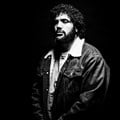There's no doubt that a city's heart beats boldest through its green spaces. New York has Central Park, London has Hyde Park and Cape Town has De Waal Park.

Image by Mark Breetzke: Sipho Mabuse rocking De Waal Park
But De Waal Park, in terms of location, is hard to beat: flanked by one of the most recognisable mountains in the world and overlooking both urban cityscape and ocean, De Waal Park is the emerald in the crown of leafy Oranjezicht.
In this serene setting, we city folk come together to unwind, recharge our batteries and inhale copious quantities of nature after a grinding day at the desk.
It’s a place where dog walkers meet up and let their four-legged babies say hello. It has also, over the years, been a place where communities have come together under the canopies of the 120+ species of trees to have a picnic, practice their slacklining and enjoy musical performances around the bandstand.
Today this gracious Victorian grande dame, complete with crisscrossing footpaths, trees, benches and a Victorian fountain centrepiece still delights, just like she did at her conception in 1895.
The city’s first and largest park (after the Company’s Gardens) was purchased from the Van Breda family who owned a farm called Oranjezicht back in the day. The city divided the plot into three sections and built two small reservoirs below Camps Street and a larger one (Molteno) below Belvedere Rd. The space between the reservoirs formed a natural park - and De Waal Park was born.
A forward-thinking councillor and law-maker at the time, David Christiaan De Waal, ordered the planting of thousands of trees in the city as well as in the ‘park’. The park, initially referred to as “Jubilee Park”, was opened to the public in 1895 by De Waal, who was mayor at the time.
Soon it became simply known as De Waal Park - as it still is today. Elegant art-nouveau-style gates with wrought-iron arches were created as entrances and in 1899 a wall was built along Camp St and extended up Orange St in 1900. A hedge of Kei Apple was planted to fence off the rectangular-shaped park.
Incidentally, the original Edwardian bandstand was manufactured by Messrs Walter McFarlane and Co of Glasgow and presented to ‘The Corporation’ in Cape Town by the Traders-Market and Exhibition Ltd. London in 1904! It was initially used at the Cape Town Exhibition held in Green Pont but moved to De Waal Park after the exhibition was over.
In 1968 De Waal Park received National Monument status and has since been maintained as a public garden.
That being said, the iconic bandstand has been an intrinsic part of the community over the decades and has seen its fair share of musical performances, not least the annual set of Summer Concerts In The Park, staged from the same Edwardian bandstand over the past 12 years.
Over the years, Sipho “Hotstix" Mabuse, Arno Carstens, Steve Louw and Big Sky, Jimmy Nevis, Karen Zoid, The Rudimentals, Hotwater, Jimmy Dludlu, Prime Circle, Mark Haze have all played at the Park.
In 2022/3 the 10-show lineup kicks off with Mi Casa, Majozi, and Saudiq Kahn, and for the first time at Concerts In The Park, the delightful Elkanah School Band on 4 December.
The Park yet again cordially welcomes everyone from 4 December to 23 April. Bookings available here.








































